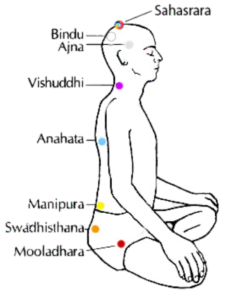Unmani Mudra
Introduction
Unmani Mudra is a hand gesture in yoga that is traditionally practiced to calm the mind, induce deep relaxation, and support meditative states. It is particularly beneficial for individuals experiencing stress, restlessness, or insomnia.
The term Unmani comes from Sanskrit, meaning “beyond the mind” or “mindless”, reflecting the mudra’s purpose of helping practitioners transcend ordinary thought processes and enter a state of mental stillness and inner peace.
Meaning
Unmani: Beyond the mind, mindless, transcendence of thought.
Mudra: Gesture to channel energy and promote mental stillness.
Overall Meaning:
Unmani Mudra encourages a state of deep mental calmness, relaxation, and mindfulness, allowing the practitioner to release tension and stress while enhancing meditation.
How to Perform / Practice
Sit in any comfortable meditation asana. Open the eyes fully, but without straining. Inhale slowly and deeply. Hold the breath inside.
Focus the awareness at bindu chakra in the back of the head for a few seconds. Exhale slowly, allowing the awareness to descend with the breath from bindu through the chakras in the spine: ajna, vishuddhi, anahata, manipura, swadhisthana, mooladhara.
The eyes should slowly close as the awareness descends.
By the time the awareness reaches mooladhara, the eyes should be fully closed. Even when the eyes are open, the awareness is looking within.
Do not try too hard, but allow the process to occur spontaneously. Inhale deeply and begin the next round. Continue for 5 to 10 minutes.
Benefits
Physical Benefits:
Reduces muscular tension and promotes bodily relaxation.
Supports restful sleep and alleviates insomnia.
Enhances circulation in hands and fingers.
Mental & Emotional Benefits:
Calms the mind and reduces anxiety or restlessness.
Enhances focus and concentration during meditation.
Promotes emotional balance and mental clarity.
Energetic / Spiritual Benefits:
Helps in directing pranic energy inward for meditation.
Supports entering deeper meditative or contemplative states.
Facilitates a sense of inner peace and detachment from stress.
Contraindications
Avoid if there is recent hand injury, arthritis, or pain.
Discontinue if numbness, tingling, or discomfort occurs during prolonged practice.
Practice gently without forcing the fingers.
Anatomy & Physiology
Muscles: Engages intrinsic hand muscles (lumbricals, interossei) to interlace fingers.
Joints: Flexion at multiple finger joints to interlace; slight abduction of thumbs.
Nervous System: Activates parasympathetic system, promoting relaxation and lowering stress response.
Circulation: Gentle pressure of interlaced fingers improves microcirculation in hands.
Kinesiology
Enhances fine motor coordination and finger dexterity.
Supports static postural stability while seated.
Encourages relaxed hand posture, aiding in mental and physical calmness.
Neurology
Stimulates brain regions associated with stress reduction, focus, and emotional regulation.
Activates parasympathetic pathways, lowering heart rate and promoting relaxation.
Supports neural plasticity, improving mental clarity, calmness, and attention.
Duration of Practice
Daily Practice: 10–30 minutes, can be divided into shorter sessions.
Short Practice: 5–10 minutes during breaks for relaxation or stress relief.
Best practiced in combination with meditation or pranayama for enhanced effect.
Counter Mudra
If excessive lethargy or drowsiness occurs, switch to Gyan Mudra or Prana Mudra to stimulate alertness.
Gentle hand stretching or shaking can release tension after prolonged practice.
Conclusion
Unmani Mudra is a gentle yet effective hand gesture to calm the mind, reduce stress, and support deep meditative states. Regular practice harmonizes mental, physical, and energetic systems, making it an excellent tool for stress relief, emotional balance, and mindfulness. Proper execution ensures maximum benefits without discomfort.
FAQ
Q1: Can beginners practice Unmani Mudra?
A: Yes, it is simple and safe. Start with 5–10 minutes and gradually increase.
Q2: Can it help with insomnia?
A: Yes, it promotes relaxation and mental calm, aiding restful sleep.
Q3: Can it be combined with other mudras?
A: Yes, it can be combined with Dhyana Mudra or Prana Mudra during meditation.
Q4: Can it be practiced while walking?
A: Not recommended; best practiced seated for stability and focus.
References
Swami Satyananda Saraswati, Mudras for Healing and Transformation.
Iyengar, B.K.S., Light on Yoga.
Saraswati, S., Pranayama and Mudras in Yoga Therapy.
Fishman, L., Yoga for Emotional Balance.
Journal of Bodywork and Movement Therapies, 2018; 22(4): Effects of Hand Mudras on Mental and Physiological Functions.
